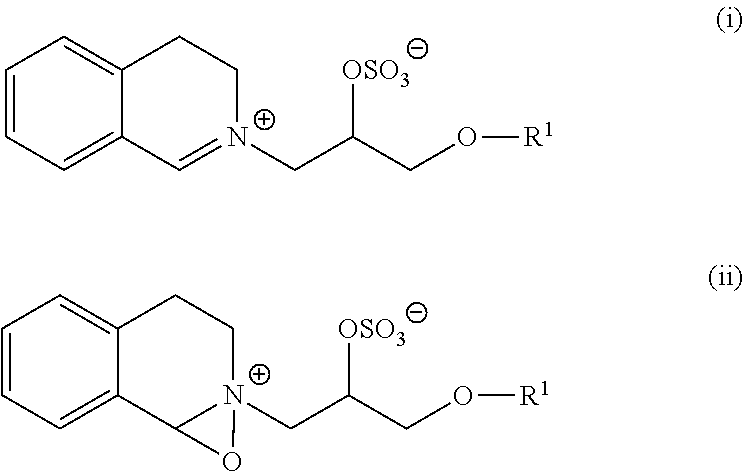Laundry Method, Use of Polypeptide and Detergent Composition
a polypeptide and detergent composition technology, applied in detergent compositions, chemical instruments and processes, organic/inorganic per-compound compounding agents, etc., can solve the problems of poor compatibility of bleaching compounds e.g., textiles are hidden, and many bleaching compounds suffer from poor compatibility with other detergent ingredients during storage, so as to prevent or reduce the redeposition of soils released, prevent or reduce dye transfer, the effect of reducing pilling
- Summary
- Abstract
- Description
- Claims
- Application Information
AI Technical Summary
Benefits of technology
Problems solved by technology
Method used
Image
Examples
example 1
Isolating Laundry Specific Bacterial Strains
[0184]One strain of Brevundimonas sp. isolated from laundry was used in the present example.
[0185]The Brevundimonas sp. was isolated during a study, where the bacterial diversity in laundry after washing at 15, 40 and 60° C., respectively, was investigated. The study was conducted on laundry collected from Danish households. For each wash, 20 g of laundry items (tea towel, towel, dish cloth, bib, T-shirt armpit, T-shirt collar, socks) in the range 4:3:2:2:1:1:1 was used. Washing was performed in a Laundr-O-Meter (LOM) at 15, 40 or 60° C. For washing at 15 and 40° C., Ariel Sensitive White & Color was used, whereas WFK IEC-A* model detergent was used for washing at 60° C. Ariel Sensitive White & Color was prepared by weighing out 5.1 g and adding tap water up to 1000 ml followed by stirring for 5 minutes. WFK IEC-A* model detergent (which is available from WFK Testgewebe GmbH) was prepared by weighing out 5 g and adding tap water up to 1300...
example 2
Wash Performance of Polypeptide Having DNAse Activity in the Presence of Bleach System
Materials and Methods
Preparation of Biofilm Swatches
[0188]Round swatches (diameter 2 cm) of sterile Polyester WFK30A with Brevundimonas sp. biofilm was prepared as described in Example 1.
Washing Experiment
[0189]Wash liquor of Powder Model detergent T without bleach was prepared by dissolving detergent (5.33 g / l) in water with hardness 15° dH. The AEO Biosoft N25-7 (NI) (0.16 g / l) component of model detergent T was added separately. Pigment soil (Pigmentschmutz, 09V, wfk, Krefeld, Germany) (0.7 g / L) was added to the wash liquor. Various amounts of the bleach system consisting of TAED and percarbonate were weighed out and dissolved in the wash liquor by stirring on a magnetic stirrer for 5 min. 10 ml of wash liquor was added to a 50 ml tube in which five rinsed swatches with Brevundimonas sp. and five sterile polyester (WFK30A) swatches. In washes where A. oryzae DNase was included, DNase (0.5 ppm) w...
example 3
Wash Performance of Polypeptide Having DNAse Activity in the Presence of Bleach System
[0191]The effect of DNAse and Bleach and, e.g., synergistic effects may be shown in a setup where textile is soiled with a combination of DNA and typical bleachable soil blueberry juice. The textile is preferred to be Poly Cotton 50 / 50 Jersey knittedT-7422 but could also be textile of either WFK20A cotton polyester or wfk 10A cotton or wfk 30A polyester.
Preparation of DNA / Blue Berry Swatches:
[0192]Round swatches (diameter 2 cm) of sterile Polyester WFK30A with Salmon DNA or blueberry juice, DNA with added blueberry juice or DNA mixed with blueberry juice before addition to textile may be prepared.
[0193]DNA swatches: swatches 1.5 g Deoxyribonucleic acid sodium from Salmon testes; DNA (Sigma 1626) is weighed out and added to 100 ml milliQ water in a bluecap bottle. Put in a magnetic stirrer. Stir to 60 minutes on max speed until it is homogeneous. Textile is smothered into the solution and soaked for...
PUM
| Property | Measurement | Unit |
|---|---|---|
| temperature | aaaaa | aaaaa |
| temperature | aaaaa | aaaaa |
| temperature | aaaaa | aaaaa |
Abstract
Description
Claims
Application Information
 Login to view more
Login to view more - R&D Engineer
- R&D Manager
- IP Professional
- Industry Leading Data Capabilities
- Powerful AI technology
- Patent DNA Extraction
Browse by: Latest US Patents, China's latest patents, Technical Efficacy Thesaurus, Application Domain, Technology Topic.
© 2024 PatSnap. All rights reserved.Legal|Privacy policy|Modern Slavery Act Transparency Statement|Sitemap

